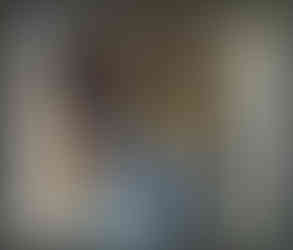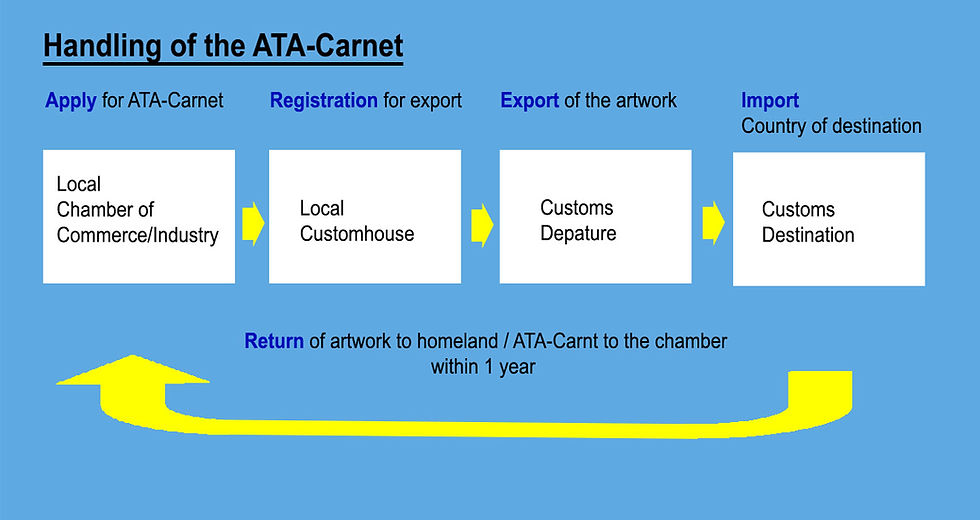Connecting and Creating in Isolation
- Admin
- Apr 15, 2022
- 7 min read
by Alexandra Tyng
Within a few weeks in March, 2020, my life, your lives, and our world changed dramatically. Many people lost their lives. Many of those who were fortunate enough to continue living ironically lost their means of “making a living.” As a painter of multi-figure paintings and commissioned portraits, I suddenly found myself isolated from other people. Initially, I wondered if I would lose my ability to help support my family by making and selling my artwork, but I gradually discovered new ways of connecting with people and thereby continuing to create the kind of paintings that give me joy.
As COVID first appeared in the U.S., I was composing a multi-figure painting entitled The Architecture of Connection. A friend of mine had had a vivid dream that he thought would translate well into a painting. I was intrigued by the idea and I set to work making preliminary sketches of the composition. In the dream, a reunion of high school friends is happening at the incongruous juncture of two atriums of two separate buildings—the hospital and the Philadelphia Art Museum. The dreamer, dressed in a hospital gown, is crawling on hands and knees towards three beautiful women, former classmates. Fortunately I was able to photograph my friend in a hospital gown before the pandemic. When I heard that the art museum was planning to shut its doors to the public, I went there to photograph the atrium before it closed. By the time I got around to thinking about the female figures, everyone was already isolating in their homes or studios. Weeks of isolation stretched into months. I decided to use myself as stand-ins for all the female figures in the painting. I set up lighting and posed as each woman, while my husband took photos at the correct height, distance, and angle to the light source. Then I printed and cut out the figures and moved them around in the composition until I was pleased with the spacing and the way in which they related to each other. I wanted to ask Linda Tracey Brandon and Nanci France-Vaz to pose--now, in a strange twist of fate, physical distance was not an obstacle. If I sent them specific directions and photos, plus a photo of the whole composition so they could understand how the figures interacted, it might work. It couldn’t hurt to ask. To my surprise and delight, both artists were excited to be in the painting and took time out of their busy lives to help. The photos they took were beyond my expectations.
This is how I demonstrated the poses of the three female figures in The Architecture of Connection. Poses 1 and 2 were sent to Nanci France-Vaz; pose 3 was sent to Linda Tracey Brandon. Nanci and Linda sent photos of themselves in the same poses back to me, and I used their photos to paint from.
1. Maquette in pose of main figure in The Architecture of Connection. I used lighting consistent with that in the painting to light maquettes of all four figures. This helped me clearly see the shadow patterns created by multiple light sources.
2. Final photo map made from cut and pasted elements, for The Architecture of Connection. Photo of Nanci France-Vaz by Nanci; photo of Linda Tracey Brandon by George Brandon.
3. Drawing the background of The Architecture of Connection in single-point perspective before placing the figures in space

The Architecture of Connection, oil on linen, 50” x 50”, 2020
A new, exciting adventure began to unfold in my studio. As the pandemic was forcing me to abandon my usual process of taking my own photos of people and directing them in person, I had to come up with ways of working with people remotely. I learned what to explain and what to leave up to others. I sometimes needed to change details, but I was pleased by how unself-conscious people were when they posed without me there. I also had access to a much wider group of people. I had always assumed my friends and relatives would consider posing an imposition, but I told myself, “Just ask. The worse they can say is no.” To my surprise they all said yes!
Two paintings of the Greek goddess Aphrodite (Venus) were next. My intent with these was to imagine what the Greek gods and goddesses would be like as people living today, to understand their psychological interactions and motives, and to recreate my own interpretations of the myths in contemporary settings with a hint of magic. All the characters are played by people in the arts. Nancy Bea Miller (painter) is Aphrodite in both paintings; her husband Paul Downs (furniture designer) portrays her lover Pan; my daughter Becca Kantor (writer and editor) appears as Psyche; and Russell Janzen (principal dancer for the NYC Ballet) is Eros.
Defy the Gods was the first painting of the Aphrodite dyad to be completed. It depicts a seminal moment in the story of Eros and Psyche, when Psyche lights a lamp, revealing things that were not evident before. The light is symbol of consciousness and a catalyst for change. I had designed the composition in 2019, at which time I had taken reference photos of Nancy Bea as Aphrodite, Eros’ mother. During the first year of the Pandemic, my daughter Becca stayed with us and I persuaded her to pose as Psyche. The composition was coming together but I needed an Eros. I wondered if Becca’s friend Russell would be interested, and to my delight he responded, “I have always wanted to be in one of your paintings.” Russell brilliantly interpreted Eros’s part in the story, and Becca did an excellent job of expressing Psyche’s complex mix of emotions. One thing that most amazed me once again was the way in which the different people involved could pose remotely but react to each other as though they were together in real space.
1. An early mockup of Defy the Gods, using a photo of the Statue of Eros in Piccadilly Circus, London, as a placeholder for the figure of Eros. 2. A plan of the space in Defy the Gods for Russell Janzen. I don’t think he needed this.
3. Final photo map for Defy the Gods. Photo of Russell Janzen by Oliver Herring.

Defy The Gods, oil on linen, 48” x 52”, 2021
For about a year, I’d thought vaguely about painting Nancy Bea reclining on my living-room sofa while her husband serenaded her on his flute. After the pandemic started, I went quickly from thinking “I missed my chance!” to “Let’s bring the whole composition outside in nature!” and I had a sudden, detailed vision of the painting that eventually became The Shadow of Abundance—companion and chronological precursor of Defy the Gods. A magical, strangely Bacchanalian photo-shoot transpired in the summer dusk of our garden, featuring a statuesque woman in a highly decorated dress smiling blissfully at her lover while the notes of his flute rippled through the air. Nancy Bea remembers it as “fun, funny and weird.” Which might also describe the reaction of our new neighbors who paused their backyard grilling to watch. I planned the composition by cutting and pasting together parts of different photos in the series, and mixing, moving, and adding decorative elements to the dress to make it a truly a cascade of abundance. Before painting the full-sized version of this painting, I donated a small study of this work, Abundance, to the Finding Our Voices art auction in Rockland, Maine to support awareness of domestic abuse. In 2021 I began the larger version, into which I introduced some slightly darker notes. Even as I was painting, I was adding more details near the bottom of Aphrodite’s dress to suggest abundance gone wild. A younger Eros sits in the lower left corner contemplating mischief with his bow and arrow.
1. Photoshoot for The Shadow of Abundance. Nancy Bea Miller and Paul Downs having fun as Aphrodite and Pan.
2 & 3. Two aspects of Nancy Bea Miller during the photoshoot. Photos by Paul Downs.
4. Abundance (study for The Shadow of Abundance, work in progress) oil on linen, 26” x 24”, 2020, for Finding Our Voices auction.
5. Final photo map for The Shadow of Abundance.

The Shadow of Abundance, oil on linen, 52” x 48”, 2021
As I was busy creating these paintings, bunches of photos were sent to me from friends and family members who thought that I might need reference material for paintings while we couldn’t travel or see each other in person. One photo of my brother, Nathaniel Kahn (filmmaker), became the reference shot for Pandemic Surfer. The photo shows him leaning against the window walls of a lighthouse tower on an island in Penobscot Bay, Maine. The position of his arms immediately reminded me of a wave, and of a surfer balancing, and I couldn’t look at the photo without imagining behind him a series of Covid-19 waves becoming increasingly higher. He, and everyone, were isolated but never safe--always aware that just outside our protective bubbles was this menacing, unseen threat. I used the reference photo without much change, incorporating a graph of the COVID waves on the horizon, and gradually changing the coloration of the ocean and distant shoreline from left to right as if to reflect a viral storm cloud.

Pandemic Surfer, oil on linen, 24” x 32”, 2021
Two years have now passed since I started The Architecture of Connection. While I was working on it, I never thought that the man crawling his way back to health and life, or the themes of reunion and connection, would also be symbols of what we would encounter through the pandemic. Connection has a greater significance for me now. And in the process of making art, I have a new appreciation for the many ways in which I’ve been able to connect with people. All my figure paintings are to some extent autobiographical, and I believe this is one reason why I like populating these paintings with people I know. It was at first strangely painful to delegate to others the job of capturing my visions with their cameras, though I had to do this to finish work. Now I feel more comfortable handing over this part of the process if necessary. But I’m looking forward to the day when I can be where I want to share real space with the people who inspire me.









































































Comments